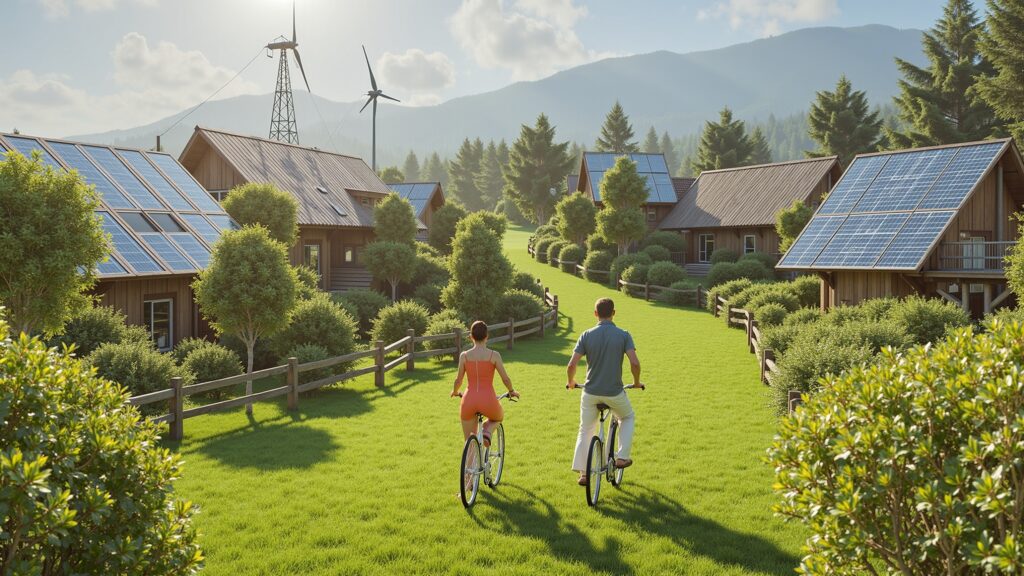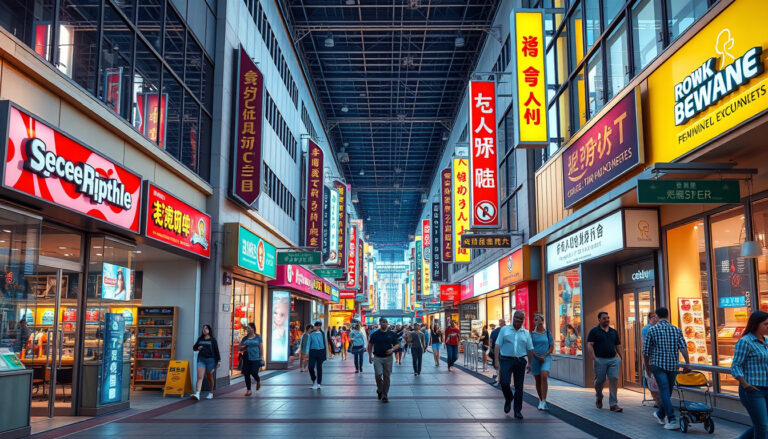In our rapidly changing world, the concept of eco-friendly communities has emerged as a beacon of hope for achieving sustainability.
These communities prioritize environmental stewardship, social equity, and economic viability, making them essential players in the quest for a greener future.
As more individuals seek a harmonious balance between their lifestyle and the health of the planet, understanding the benefits of eco-friendly communities becomes increasingly important.
From reducing carbon footprints to fostering vibrant social connections, eco-friendly communities offer a holistic approach to sustainable living that can inspire us all.

Key Takeaways
- Eco-friendly communities significantly reduce carbon footprints and promote environmental sustainability.
- These communities can lead to lower living costs through energy efficiency and shared resources.
- Socially, eco-friendly communities foster stronger connections and collaboration among residents.
- Challenges such as initial costs and regulatory hurdles can impede the development of eco-friendly communities.
- Emerging trends suggest a growing movement towards sustainable living practices in urban planning.
Introduction to Eco-Friendly Communities
When it comes to sustainable living, Costa Rica stands out for its commitment to preserving the environment, making it an ideal location for those interested in eco-friendly communities.
These communities are designed with a focus on sustainability, utilizing renewable energy sources, organic farming, and green building practices to minimize their ecological footprint.
In Costa Rica, many eco-friendly communities offer not only stunning natural landscapes but also a supportive lifestyle that embraces holistic well-being.
Whether you are looking for a vacation home or a permanent residence, investing in real estate within these communities allows you to enjoy the country’s rich biodiversity while promoting environmentally responsible living.
With government initiatives and incentives aimed at protecting the planet, eco-friendly communities in Costa Rica provide an exceptional opportunity for those who value sustainability as a core principle in their lives.
The Environmental Impact of Eco-Friendly Communities
Eco-friendly communities are increasingly gaining popularity as more individuals and families look for sustainable living options.
These communities prioritize the integration of green building practices, renewable energy sources, and conservation of natural resources, significantly reducing their environmental impact.
In eco-friendly communities, developers often utilize sustainable materials in construction, implement water conservation systems, and create green spaces that promote biodiversity.
By choosing to live in such communities, residents not only contribute to the preservation of the environment, but they also enjoy lower utility bills, healthier living conditions, and a strong sense of community among like-minded neighbors.
Ultimately, the rise of eco-friendly communities demonstrates a significant shift towards more responsible living, making a profound difference in the fight against climate change.
‘The greatest threat to our planet is the belief that someone else will save it.’ – Robert Swan

Economic Advantages of Sustainable Living
Costa Rica is renowned for its commitment to sustainability, making it a prime location for those looking to invest in eco-friendly communities.
The economic advantages of sustainable living in Costa Rica are hard to ignore.
First and foremost, these eco-friendly communities often attract tourists and residents who prioritize environmental consciousness, boosting local economies through sustainable tourism.
Many eco-friendly developments also benefit from lower utility costs due to renewable energy sources and efficient resource management, leading to significant savings for homeowners.
Furthermore, properties within these communities tend to appreciate in value more rapidly, fueled by the increasing demand for green living and sustainable practices.
This proactive approach not only enhances property values but also fosters a robust, resilient economy that thrives on preserving the natural beauty and biodiversity of Costa Rica.
As more people globally recognize the importance of sustainable living, investing in eco-friendly communities in this Central American paradise presents a lucrative opportunity.
Social Benefits of Eco-Friendly Communities
Eco-friendly communities are becoming increasingly popular as individuals and families seek sustainable living options.
The social benefits of these communities are manifold, enhancing both quality of life and community engagement.
Firstly, eco-friendly communities are designed to promote social interaction and healthy lifestyles; they often feature shared green spaces, community gardens, and recreational areas that encourage residents to connect with each other.
This fosters a strong sense of community, where neighbors become friends and collaborate on environmental initiatives.
Moreover, living in an eco-friendly community typically reduces the carbon footprint, leading to cleaner air and a healthier environment for all.
Residents often find a greater sense of purpose through collective efforts in sustainability practices, from recycling programs to local clean-up days.
The increased focus on sustainability not only nurtures a sense of responsibility toward the environment but also emboldens residents to engage in local governance and advocacy, amplifying their voices in wider community issues.
Overall, the social benefits of eco-friendly communities extend beyond mere environmental advantages, creating a vibrant, engaged, and supportive community culture.

Challenges in Developing Eco-Friendly Communities
The development of eco-friendly communities presents a unique set of challenges that can hinder progress despite the growing demand for sustainable living options.
One of the foremost hurdles is the need for substantial initial investment; building structures that meet eco-friendly standards often requires advanced technology, sustainable materials, and green building certifications which can be costly.
Furthermore, local governments and developers may face regulatory obstacles, as existing zoning laws may not accommodate the innovative designs of eco-friendly communities.
Additionally, creating a balanced ecosystem that integrates renewable energy sources, efficient waste management, and community involvement can be daunting.
These complexities require collaborative efforts among architects, environmentalists, and community leaders to ensure that eco-friendly communities are not only sustainable but also viable and attractive to potential residents.
As awareness of environmental issues continues to rise, addressing these challenges is crucial to the successful development and maintenance of eco-friendly communities.
Future Trends in Eco-Friendly Living
As the world increasingly understands the importance of sustainable living, the demand for eco-friendly communities is rising.
These communities are designed not only to minimize environmental impact but also to enhance the quality of life for residents.
Future trends indicate a notable shift towards integrating green spaces, renewable energy, and sustainable architecture within residential developments.
For instance, solar panels and rainwater harvesting systems are becoming commonplace in new constructions, allowing residents to reduce their carbon footprint while enjoying the benefits of modern amenities.
Furthermore, the concept of co-housing, where individuals share resources and communal spaces, is gaining traction as a viable way to promote sustainability and community engagement.
This shift reflects a broader societal movement towards responsible living, making eco-friendly communities not just a trend, but a vital aspect of our collective future.
Frequently Asked Questions
What are eco-friendly communities?
Eco-friendly communities are neighborhoods or towns designed with a focus on sustainable living practices, reducing their environmental impact while promoting the health and well-being of their residents.
What environmental benefits do eco-friendly communities provide?
Eco-friendly communities help reduce pollution, conserve natural resources, enhance biodiversity, and promote sustainable practices such as recycling and the use of renewable energy sources.
How can eco-friendly communities contribute to economic growth?
These communities often lead to reduced costs in energy and water consumption, increase property value, and create new green jobs, ultimately contributing to the local economy.
What social advantages are present in eco-friendly communities?
Social benefits include enhanced community engagement, improved public health through cleaner environments, and increased access to green spaces, which can foster a stronger sense of community among residents.
What challenges do eco-friendly communities face?
Challenges include higher initial development costs, navigating regulations and zoning laws, resistance from conventional businesses, and the need for community education on sustainable practices.





